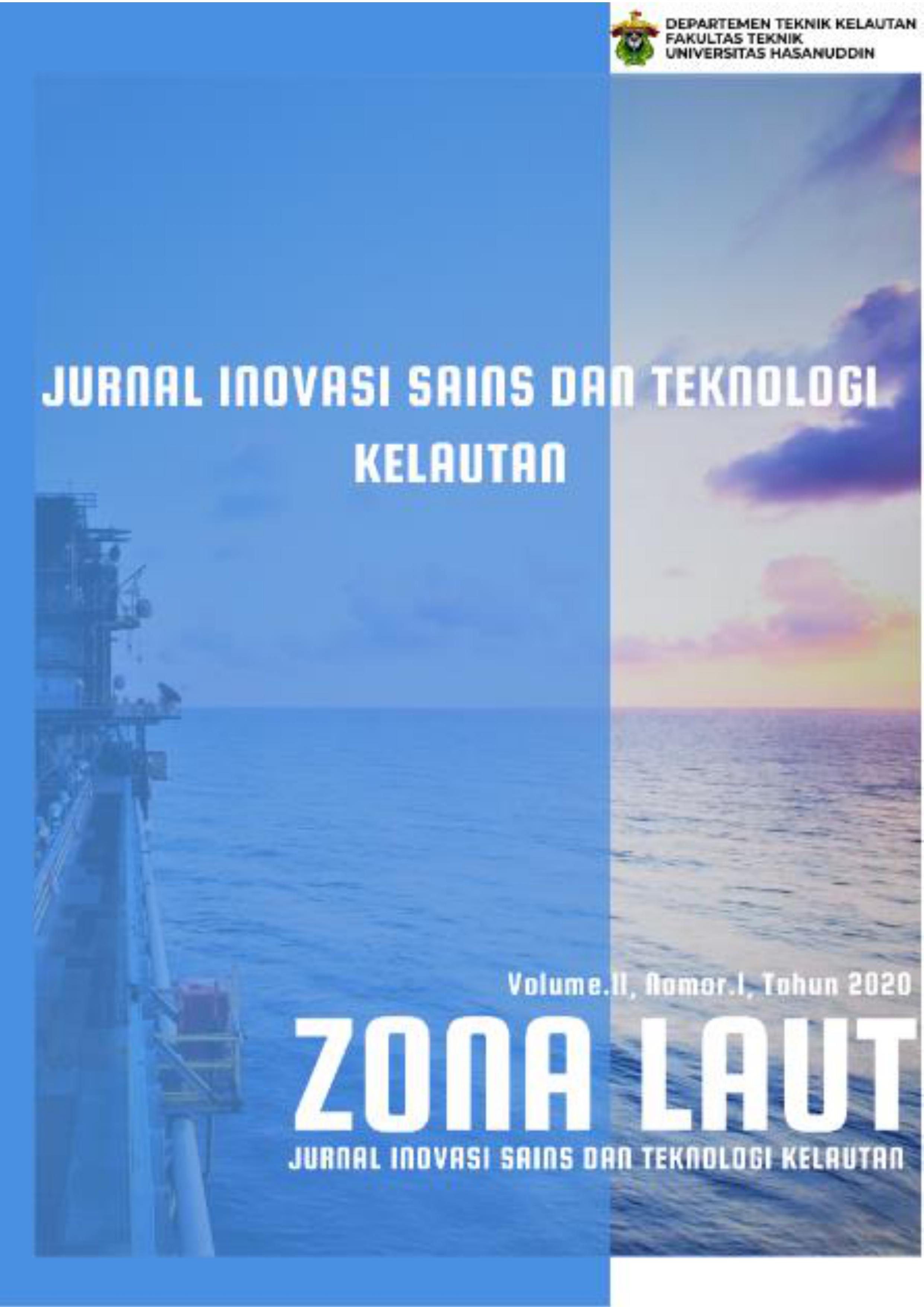The Technical Capacity of Jetty Structure Analysis of The Lampia Port
Main Article Content
Abstract
PT. Sinergi Perkebunan Nusantara plans to use the Lampia port for shipping of Crude Palm Oil (CPO). Lampia Jetty has more than ten years old so that its carrying capacity against external loads may have decreased. Therefore for the operational safety of the ship, it is necessary to study the engineering capacity of the pier. By knowing the engineering
capacity of the existing pier, the maximum ship dimensions that can be served by pier can be determined. This study began with the collection of supporting data consisting of ship data, hydro-oceanographic data, bathymetry data, pier structure data and earthquake data. Furthermore, the load calculation that works on the pier consists of dead and live loads, earthquake loads, ship impact loads, current loads, wave loads, ship tensile loads and wind loads. After the load calculation is completed, then the pier modeling is done using SAP2000 software followed by inputting the load using a
specific combination of loading and running model. In this study the dimensions of the ship were varied namely 500 ton, 700 ton, 1000 ton, 2000 ton and 3000 ton. The indicator used in assessing the technical capacity of the pier is the safety factor (SF) as a function of the ship DWT. Based on the results of the strength analysis of the pier structure, it was
found that the existing pier is capable and safe serving ships with a size of 27 1027 DWT if it uses a safety factor (SF) 1.5. Whereas if use the safety factor (SF) 2.0, the existing pier structure is capable and safe to service ships with a size of ≤ 510 DWT.
Downloads
Article Details

This work is licensed under a Creative Commons Attribution 4.0 International License.
Allow anyone to modify, improve, and make derivative works, even for commercial purposes, as long as they credit to you for the original work.
Deprecated: json_decode(): Passing null to parameter #1 ($json) of type string is deprecated in /home/journal33/public_html/plugins/generic/citations/CitationsPlugin.inc.php on line 49
References
Rahmatullah, R., Desain Struktur Dermaga Curah Cair 15000 DWT Pada Pelabuhan Pulang Pisau, Palangkaraya, Kalimantan Tengah Dengan Meninjau Pelaksanaan dan Estimasi Anggaran Biaya dimana merencanakan struktur Dermaga dengan kapasitas 15000 DWT, Institut Teknologi Surabaya (ITS) : Surabaya, 2018.
Nainggolan. L., Analisis Daya Dukung dan Pemodelan Struktur Pondasi Bored Pile Bangunan Penghubung Antar Gedung RSBA Jakarta Timur. Institut Pertanian Bogor (IPB) : Bogor. 2015.
Aditya, R et al., Perencanaan Dermaga Pelabuhan Perinstis Windesi Kab. Kepulauan Yapen, Papua.Jurnal Teknik Sipil, Volume 6, Nomor 1, Tahun 2017, 104-113 Online di : http://ejournal-sl.undip.ac.id/index.php/. 2017.
Zahrah, H., 2018. Perencanaan Struktur Atas Dermaga General Cargo Tipe Pier Berkapasitas 10.000 DWT .Universitas Muhammadiyah Sumatera Utara : Medan
Paotonan, Mas’ud, A.M., Survey Kapasitas Teknis Dermaga Pelabuhan Lampia. Proceedings of Seminar Nasional Sains dan Teknologi Kelautan (2019). 2019.
Triatmodjo, B., Teknik Pantai, Beta Offset :Yogjakarta, 1999.
Triatmodjo, B., Perencanaan Pelabuhan, Beta Offset:Yogjakarta, 2010.
Standard Design Criteria For Ports In Indonesia, Direktorat Jenderal Perhubungan Laut, Departemen Perhubungan, 1984.
Sekolah Pascasarjana Unhas, Studi Kelayakan Pembangunan Instalasi Tangki Timbun CPO dan Kernel PT.Sinergi Perkebunan Nusantara, Universitas Hasanuddin : Makassar, 2019.
Puskim. http://puskim.pu.go.id/Aplikasi/desain_spektra_indonesi2011/, 2020.

